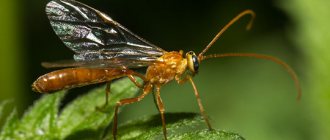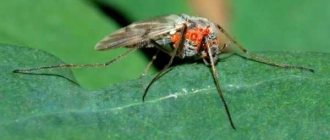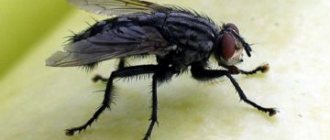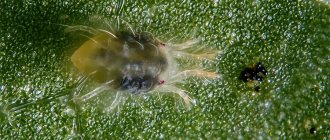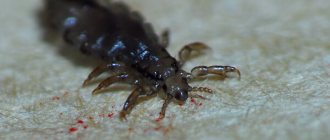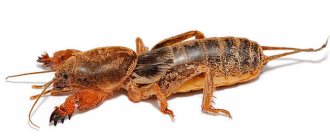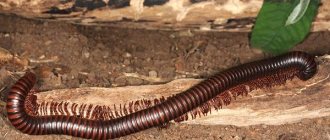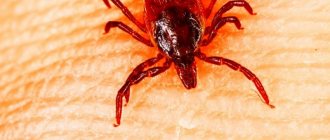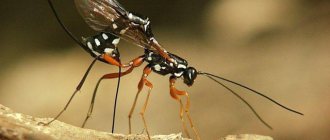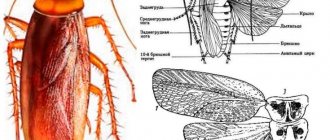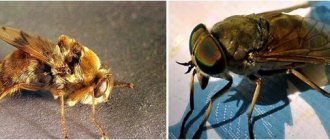It is known that centipedes are classified as a superclass of arthropod invertebrate animals. This group includes only 4 classes of insects: symphylos, pauropods, labiopods and bipopods. On our planet at this time there are about 12 thousand species of centipedes (centipedes), 11 of which have already become extinct. One of the most famous varieties of centipedes are Lucas' centipedes, giant centipedes and common flycatchers. You can learn more about centipedes, their lifestyle and danger to humans in this article.
The structure of centipedes and external features
Surprisingly, centipedes have long been classified as insects because of their external resemblance to these representatives of the animal world.
However, later scientists found out that these two subgroups cannot be equated to one, even though they have one common ancestor. The body length of centipedes varies depending on their subspecies and habitat conditions. The body of the smallest centipede on Earth reaches only 0.2 centimeters, and the largest - up to 40 centimeters. In areas with warm climates, medium-length centipedes can be found. For example, the body size of the Crimean kivsyaks is directly equal to 4 centimeters. But in areas with a cold climate, mainly small representatives of this superclass live.
The body of centipedes directly consists of segments. The head has four or five parts. The body itself is not divided into specific sections, but is also segment-shaped.
The reason for the name centipedes was their main feature - a huge number of limbs. For example, scientists counted 750 legs in some representatives! Curiously, the number of pairs of legs is always odd.
Centipedes have different body colors: ocher, orange, red, black and brown. The color of a centipede's body depends on its age. The older the creature, the darker the body shade it has and vice versa.
Feeding habits of centipedes
All species of the centipede superclass are predators. Often their favorite food is small insects: ticks, cockroaches, flies, ants, their larvae and eggs.
Some centipedes, such as ringed centipedes and giant centipedes, living in Jamaica and South America, can eat small frogs, lizards, mice and rats.
To paralyze and kill their prey, centipedes use their toxic venom. This poison is dangerous only for the arthropod family, but not for other animals. Of course, sometimes toxic substances found in poison can provoke allergic reactions in a person.
Millipedes feed like this:
- they catch prey and inject their poison into its body,
- then they hold the victim with powerful jaws and limbs, preventing it from leaving,
- When the insect completely loses control over its body, the centipedes begin to eat.
Of course, centipedes are useful creatures. After all, they destroy insects that harm agricultural land and crops. Surprisingly, in some countries they are even protected by law and prohibited from being exterminated.
Habitat
The common flycatcher can be found in many temperate regions. In Russia, this is the Volga region, the southern regions, the insect lives in the northern part of Africa, Europe, the Middle East, and Mediterranean countries. Under natural conditions, centipedes hide under stones, fallen leaves, and plant remains. The domestic centipede hunts at any time of the day.
They move to human housing with the onset of autumn cold weather. Prefer dark and damp places:
- basement;
- bathroom;
- toilet.
During the winter, the insect hibernates and becomes active only when the weather warms up. In southern countries, centipedes are treated kindly, because they help exterminate pests.
Reproduction of centipedes
Throughout their entire life span, centipedes are loners.
Only from May to June do they have an active breeding season. It is at this time that females produce special substances called pheromones, which attract males. Centipedes have their own specific method of fertilization. First, the male builds a hole in the ground and blocks the entrance to it. Next, he directly deposits a sac with his seminal fluid - a spermatophore - into the hole. After a couple of minutes, the female individual crawls under the pouch, touching it with her genitals. Two days later, she already reproduces eggs in the same hole. The female covers the top of the eggs with a layer of sticky mucus to protect future offspring from predators.
One burrow usually contains 50-145 eggs. The female never leaves the clutch and drives all insects away from it. To prevent the eggs from becoming covered with mold, the female treats them with a special composition that resembles an antifungal agent. Larvae hatch from eggs almost at the same time.
How do centipedes get into houses and apartments?
A centipede living in the wild can directly crawl into a human home completely by accident. There is, of course, one species that likes to spend the winter season in people's houses. This is a common flycatcher. It is called so because the centipede's main food is flies. When it's a warm season outside, this centipede lives in fallen leaves. In winter, she has to hide from the cold in people's homes.
Adults of the common flycatcher reach a length of 3-6 centimeters. Their body is gray-yellow in color, with red and blue stripes. The body itself is divided into 15 segment-like parts. Each part has one pair of legs. The very first pair of limbs is longer than all the others - it is with them that the centipede hunts and holds the prey.
The flycatcher is active regardless of the time of day and goes out hunting both day and night. She often sits on the walls of barns and house buildings, waiting for prey. She usually eats cockroaches and crickets.
Flycatchers themselves are not aggressive arthropods. They may weakly bite humans in defense. Centipedes of this species cannot bite through the skin strongly. Their jaw organs are too weak for this. A centipede sting is similar to an unpleasant but tolerable bee sting.
In general, flycatchers are considered by biologists to be a useful species of centipede. They eat dangerous and harmful insects, thereby protecting humans from them. However, due to the strange and sometimes frightening appearance of centipedes, people see them as a danger, and almost always choose to remove them.
Why are people afraid of flycatchers?
The fear of centipedes and the hostility towards them on the part of people is explained mainly by two facts: disgust for their appearance and fear that they might get into the ear. The last statement is more related to the common myth about earwigs, which, according to some people, are able to get into the ear of a sleeping person, bite through the eardrum and penetrate the brain. Flycatchers are confused with earwigs, so they are just as feared.
In fact, neither the flycatcher nor the earwig has any intention of getting into human ears, much less capable of gnawing on the eardrum and brain. Besides, they don’t need it at all; they don’t feed on the brain.
It happens that small insects get into people's ears (most often these are flies, midges or cockroaches). Under no circumstances will a flycatcher climb into the ear canal - there is nothing attractive there for it and with its long legs it is completely inconvenient.
How to remove centipedes from your home
To quickly remove centipedes from your apartment or house, you need to create conditions that they do not like:
reduce indoor air humidity (centipedes will not be able to reproduce normally if the humidity is low);- regularly ventilate the bathroom and toilet;
- eliminate mold and mildew;
- regularly clean all surfaces in the bathroom and toilet using soda and chlorine-containing substances;
- seal all cracks in window and door openings with sealant or silicone foam;
- exterminate cockroaches and crickets directly living in the home and near it (this is the food that centipedes feed on);
- if there are few individuals, you can catch them with your hands (it is important to follow safety precautions and catch arthropods while wearing thick gloves).
If there are too many insects, the above methods will only be a preventive measure, and not a method of getting rid of them. Here's how to combat a large population of centipedes:
- Apply boric acid powder and solution throughout the room on the floor.
- Sprinkle diatomaceous earth powder over the entire area of your home. It is harmless to pets and humans, but repels arthropods.
- Use pesticides to kill insects (Raid, Clean House, Dust, etc.).
You need to know that sticky fly traps are not effective against centipedes. A bug can easily escape from this trap, leaving its limbs there, which will then grow back.
Exposure to insecticides
It is difficult to find a special drug that is designed to kill only centipedes. For this reason, universal means should be used:
- Medilis-Ziper. This is a concentrated liquid that is used to prepare a working solution. It is used to spray an object. It destroys not only centipedes. The downside of the drug is increased toxicity.
- Raid in the form of an aerosol. It is characterized by a pleasant smell; when using it, you do not need to leave the room.
- Lambda-Zone is a safe drug for humans and animals.
- Globol Original is a toxic product, offered in the form of a gel.
- Great Warrior - gel against ants and cockroaches. This remedy also works on flycatchers and double-easted flycatchers.
It is useless to use sticky traps, since the flycatcher's leg may remain on the sticky strip, and the insect will escape. Considering how many legs a centipede has, losing a few legs won't affect its speed. A new one will grow in place of the lost limb.
Related posts:
The benefits of centipedes and their harm
Centipedes are almost harmless creatures.
Of course, some of their species, in the absence of suitable food (usually insects), can climb into greenhouses and gnaw the roots of plants. However, many of them eat mainly weeds. Centipedes are real helpers for agriculture. They directly hunt insect pests by eating them and thereby significantly reducing their population. The main victims of centipedes are mosquitoes, flies, ticks, caterpillars and moths. In addition, centipedes make small passages in the ground, thereby loosening the soil and improving its ventilation and aeration.
It is curious that the venom of some subspecies of centipedes is successfully used in folk medicine. For example, in the east, Chinese red scolopendra is used to treat dermatological diseases. It is generally accepted that the substances in the poison directly accelerate the healing of inflammation, abrasions and wounds. Some even breed centipedes at home in a special terrarium for agricultural needs.
The danger of centipedes to the human body
Some people are very afraid of centipedes because of their intimidating body and legs.
However, these creatures are almost not dangerous for people. They can only bite if they themselves are in danger. For example, if someone wants to catch them. Sometimes these arthropods can hide in a person’s clothes or shoes and sting him when he begins to put on his shoes or get dressed and does not notice them. It is recommended to get rid of centipedes only when they have settled in the home in too large numbers.
Centipede bite - dangerous or not?
The venom of all varieties of centipedes is not dangerous to the human body. Death can only occur when a person is bitten by 1000 of these arthropods at once. Typically, these insects prefer to run away from people rather than injure them.
The centipede bite itself is unpleasant. It seems as if the person was stung by a bee. Centipedes bite just like wasps: they repeatedly inject more and more poison. Redness, burning and swelling occur in the damaged area. If a person is bitten by a giant centipede, he will suffer from weakness, fever and general intoxication of the body. These symptoms may persist for 14-21 days.
But the Californian scolopendra causes an allergic reaction not only when bitten, but also during normal contact of its body with the human body. The fact is that her body emits a toxic substance, which has such an effect.
If you are bitten by a centipede, you need to act like this:
- Promptly remove the arthropod from the body. In defense, the centipede will continue to inject poison, which will intensify the pain and burning sensation.
- Apply something cold to the affected area. This will reduce pain and cause capillary spasm, as a result of which the spread of harmful substances through the blood will slow down.
- If a person has frequent allergies, he needs to take an antihistamine medication (Diazolin, Zyrtec, Suprastin).
A bite can directly cause a severe allergic reaction. If immediately after the bite a person’s condition worsens, his breathing becomes difficult, and severe swelling appears on the skin, you should immediately call an ambulance. Before the brigade arrives, you need to provide the victim with first aid:
- Calm the patient and place him on a horizontal surface, raising his head.
- Unfasten the buttons and zippers that tighten the body, open the windows for fresh air.
- Place a cold compress or object on the damaged area.
- Give the victim to take an antiallergic drug.
Thus, we can conclude that centipedes are not dangerous to people and animals. They begin to behave aggressively only if they sense a dangerous moment. For agriculture, they bring enormous benefits by exterminating parasitic insects that can destroy crops. Therefore, it is better not to touch them or kill them.
How do flycatchers hunt and who do they eat?
Flycatchers choose places with insects and beetles harmful to humans: black cockroaches, flies and fleas, moths and spiders, crickets or termites. They go hunting at night, but there are also hunters who wait for prey during the day, settling on the floor, climbing onto the ceiling or onto the wall.
They sit for hours without moving. As the prey approaches, they attack at lightning speed, neutralizing the prey by injecting poison into 2-3 insects at once. He slowly eats one dish and holds another with his legs.
